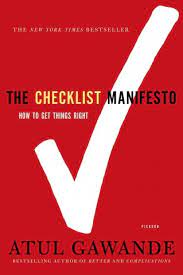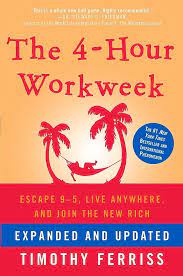If you are looking for some inspiration and guidance on how to improve your productivity, you might want to check out these 10 books on productivity that can help you achieve more with less stress and distraction. These books cover various aspects of productivity, such as time management, focus, prioritization, habits, goals, and motivation. Whether you want to get more done at work, at home, or in your personal projects, these books will provide you with practical tips, strategies, and insights that you can apply to your own situation. Here are the top 10 books on productivity to guide you towards success.
1. Getting Things Done: The Art of Stress-Free Productivity by David Allen

“Getting Things Done: The Art of Stress-Free Productivity” by David Allen is a productivity and self-help book that provides a comprehensive system for organizing tasks and managing one’s time effectively. Published in 2001 and revised in subsequent editions, the book introduces the GTD (Getting Things Done) methodology, offering practical strategies to alleviate stress and increase productivity.
The central concept of “Getting Things Done” is the idea of capturing and organizing all tasks and commitments in a systematic way, ensuring that the mind is free from the burden of trying to remember everything. Allen emphasizes the importance of capturing ideas, tasks, and responsibilities into an external system, allowing individuals to focus on the present moment without worrying about what needs to be done in the future.
The GTD methodology consists of five key steps:
- Capture: Collect and record all tasks, ideas, and commitments in an external system, such as a to-do list or digital tool.
- Clarify: Process each item to determine its significance and define actionable steps. Delegate, defer, or complete tasks based on priority.
- Organize: Categorize tasks and information into context-specific lists or folders, making it easier to locate and address them when appropriate.
- Reflect: Regularly review and update task lists, ensuring that they align with current priorities and goals.
- Engage: Act on tasks and commitments with a clear understanding of priorities, focusing on the most important and impactful actions.
Throughout the book, Allen provides practical tips, techniques, and tools to implement the GTD methodology. He addresses common challenges such as procrastination, overwhelm, and the difficulty of managing multiple commitments. The book has gained popularity for its actionable advice and has become a valuable resource for individuals seeking to enhance their organizational and productivity skills.
2. Deep Work: Rules for Focused Success in a Distracted World by Cal Newport

“Deep Work: Rules for Focused Success in a Distracted World” by Cal Newport is a compelling exploration of the importance of deep, concentrated work in achieving success in today’s technology-driven and distraction-filled environment. Published in 2016, Newport argues that the ability to focus deeply on cognitively demanding tasks is a rare and valuable skill that can set individuals apart in their professional and personal pursuits.
The book introduces the concept of “deep work,” defined as the ability to focus without distraction on a demanding task. Newport contends that deep work is becoming increasingly rare due to the prevalence of constant connectivity, social media, and the culture of constant busyness. He proposes that those who cultivate the ability to engage in deep work can produce higher-quality output and achieve more in less time.
Newport outlines several rules for embracing deep work, including the necessity of creating routines, minimizing shallow work, and cultivating a deep work ethic. He provides practical advice on how to structure one’s work environment, utilize productivity tools effectively, and set boundaries to protect focused work time.
The book also delves into the concept of “attention residue,” emphasizing the cognitive cost of switching between tasks. Newport argues that the habit of constant multitasking and task-switching hampers cognitive performance and diminishes the quality of work.
“Deep Work” incorporates case studies, anecdotes, and research findings to support Newport’s arguments. It resonates with individuals seeking strategies to enhance their focus, productivity, and overall work performance. The book encourages readers to reevaluate their approach to work, embrace deliberate practice, and create conditions that foster deep, meaningful concentration in order to achieve success in an increasingly distracted world.
3. Essentialism: The Disciplined Pursuit of Less by Greg McKeown

“Essentialism: The Disciplined Pursuit of Less” by Greg McKeown is a book that advocates for a minimalist and intentional approach to life and work. Published in 2014, the book encourages readers to focus on what truly matters, eliminate non-essential activities, and make deliberate choices to lead a more fulfilling and purpose-driven existence.
The core concept of essentialism is centered around doing fewer things but doing them better. McKeown argues that in a world filled with constant demands and distractions, individuals often spread themselves too thin, resulting in a diluted impact on the things that truly matter. The author urges readers to identify and prioritize the essential aspects of their lives and work while letting go of non-essential commitments and activities.
The book introduces key principles of essentialism, including the importance of discerning between what is truly essential and what is not, saying “no” more often, and investing time and energy in activities that align with one’s values and goals. McKeown emphasizes the need for clarity about one’s purpose, the courage to eliminate non-essential tasks, and the discipline to stay focused on what truly matters.
Throughout the book, McKeown provides practical strategies and examples to help readers adopt an essentialist mindset. He encourages individuals to develop a heightened sense of awareness, prioritize ruthlessly, and avoid the trap of the “non-essentialist” mindset, which can lead to burnout and dissatisfaction.
“Essentialism” has gained popularity for its practical advice and transformative philosophy. It challenges the prevailing notion that more is always better and provides a blueprint for living a more intentional and meaningful life. By embracing the disciplined pursuit of less, readers can cultivate a sense of clarity, purpose, and satisfaction in both their personal and professional pursuits.
4. The Power of Habit: Why We Do What We Do in Life and Business by Charles Duhigg

“The Power of Habit” by Charles Duhigg is a bestselling book that explores the science behind habits and how they influence our daily lives, both personally and professionally. Published in 2012, the book delves into the neurological patterns that form habits, the role they play in shaping behavior, and how individuals and organizations can leverage this understanding to bring about positive change.
One of the key concepts in the book is the habit loop, consisting of a cue or trigger, routine, and reward. Duhigg explores how habits are formed, how they can be modified, and the impact they have on various aspects of life. The author draws on a mix of scientific research, real-life stories, and case studies to illustrate how habits operate and can be transformed.
“The Power of Habit” also delves into the application of habit formation in business and organizational settings. Duhigg explores how successful companies and leaders utilize habits to drive productivity, innovation, and success. The book provides insights into how habits shape corporate culture and influence decision-making.
Throughout the book, Duhigg offers practical advice on how individuals can identify, understand, and change their habits. By understanding the science behind habit formation, readers can gain more control over their behavior and make positive changes in their personal and professional lives. “The Power of Habit” has been widely praised for its engaging storytelling and the practical application of scientific principles to everyday challenges.
5. The 7 Habits of Highly Effective People by Stephen R. Covey

“The 7 Habits of Highly Effective People” by Stephen R. Covey stands as a seminal work in the realm of self-help and personal development. Published in 1989, this influential book presents a transformative framework built around seven principles, or habits, designed to guide individuals toward increased effectiveness and success in various aspects of life.
The first habit, “Be Proactive,” urges readers to take charge of their lives by focusing on what they can control, fostering a sense of responsibility and initiative. Covey emphasizes the importance of intentional action over reactive responses to external circumstances.
The second habit, “Begin with the End in Mind,” encourages individuals to define their long-term goals and personal mission. Covey introduces the concept of envisioning the desired outcome before embarking on any endeavor, aligning actions with a clear sense of purpose.
“Put First Things First,” the third habit, addresses time management. Covey introduces a prioritization framework that emphasizes focusing on tasks of high importance rather than succumbing to the urgency of the moment, guiding readers toward activities aligned with their values.
Covey’s fourth habit, “Think Win-Win,” advocates for a collaborative mindset in relationships and interactions. This habit encourages seeking mutually beneficial outcomes, fostering a spirit of cooperation and shared success.
“Seek First to Understand, Then to Be Understood,” the fifth habit, emphasizes empathic listening as a cornerstone of effective communication. Covey highlights the importance of understanding others before expressing one’s own views, facilitating meaningful connections.
The sixth habit, “Synergize,” encourages individuals to leverage the strengths and perspectives of diverse individuals to create innovative and collaborative solutions. Covey promotes the idea that the collective whole can achieve more than the sum of its parts.
The final habit, “Sharpen the Saw,” underscores the importance of continuous self-renewal and improvement. Covey advocates for maintaining balance and well-being in physical, mental, social/emotional, and spiritual dimensions to sustain long-term effectiveness.
“The 7 Habits of Highly Effective People” has left an indelible mark on personal and professional development. Covey’s principles go beyond mere productivity tips, offering a comprehensive and timeless guide for those seeking a purposeful and effective life. The book remains a cornerstone in the genre, inspiring individuals worldwide to cultivate habits that lead to enduring success and fulfillment.
6. Make Time: How to Focus on What Matters Every Day by Jake Knapp and John Zeratsky

“Make Time: How to Focus on What Matters Every Day” by Jake Knapp and John Zeratsky is a productivity and time-management book that offers practical strategies for individuals seeking to prioritize and focus on what truly matters in their daily lives. Published in 2018, the book provides a refreshing approach to reclaiming time from distractions and improving overall well-being.
The central premise of “Make Time” revolves around the authors’ four-step framework for creating meaningful and intentional days: Highlight, Laser, Energize, and Reflect, collectively known as the “Habit Sprint.” The authors encourage readers to identify their priorities, eliminate unnecessary tasks, and design their days in a way that aligns with their values and goals.
The book challenges the prevalent notion of time management and productivity, emphasizing the importance of making deliberate choices about how time is spent. The concept of “Highlight” involves selecting a single, meaningful task or activity to prioritize each day, ensuring that it receives focused attention. The “Laser” step encourages the removal of distractions and the creation of an environment conducive to deep work and concentration.
To “Energize,” Knapp and Zeratsky explore techniques for maintaining physical and mental energy throughout the day. They delve into aspects of nutrition, exercise, and mindfulness, highlighting their impact on sustained productivity. The final step, “Reflect,” involves reviewing and learning from daily experiences, allowing for continuous improvement and refinement of daily habits.
Throughout the book, the authors share personal anecdotes, research findings, and practical tips to guide readers in implementing the “Make Time” methodology. They acknowledge the challenges of modern life, including the prevalence of technology and the constant barrage of information, offering realistic and achievable solutions to navigate these distractions.
“Make Time” is well-received for its accessible writing style and actionable advice, making it applicable for readers from various backgrounds. The book encourages a mindset shift toward intentional living, helping individuals create a more meaningful and focused approach to their daily routines.
7. The Checklist Manifesto by Atul Gawande

“The Checklist Manifesto” by Atul Gawande is a book that explores the power and effectiveness of checklists in various fields, particularly in complex and high-stakes environments such as healthcare, aviation, and construction. Published in 2009, the book advocates for the use of simple checklists as a tool to improve performance, prevent errors, and enhance overall efficiency.
Gawande, a surgeon and writer, draws on examples from diverse industries to make the case for checklists as a valuable instrument in managing complexity. He contends that even highly skilled professionals can benefit from the structured and systematic approach provided by checklists.
The book begins by examining the aviation industry, where checklists have played a critical role in ensuring the safety and reliability of flights. Gawande then explores how checklists have been successfully implemented in healthcare settings, demonstrating their ability to reduce errors during surgery and improve patient outcomes.
Gawande introduces the concept of the “killer item,” a critical step or action that, if missed, could lead to disastrous consequences. Checklists, he argues, serve as a means to capture and address these crucial elements systematically, reducing the likelihood of human error.
Throughout the book, Gawande shares anecdotes, case studies, and real-world examples to illustrate the impact of checklists on decision-making and performance. He emphasizes that checklists are not a panacea but are particularly effective in managing complex situations with numerous variables.
“The Checklist Manifesto” makes a compelling argument for the simplicity and versatility of checklists, portraying them as a practical solution to enhance the reliability and effectiveness of processes. Gawande’s insights have resonated across industries, prompting professionals to reconsider the value of this straightforward yet powerful tool in managing the complexities of their work.
8. The 4-Hour Workweek by Timothy Ferriss

“The 4-Hour Workweek” by Timothy Ferriss is a groundbreaking book that challenges conventional norms surrounding work and life. Published in 2007, Ferriss presents a revolutionary approach to achieving financial freedom and a more fulfilling lifestyle through the concept of “lifestyle design.” At the heart of his philosophy is the 80/20 Principle, urging readers to focus on the most impactful 20% of efforts that yield 80% of results. Ferriss advocates for outsourcing and delegation to streamline tasks, allowing individuals to concentrate on high-value activities. The book explores the idea of automating income, encouraging the creation of passive revenue streams and online businesses.
A central theme is the notion of “mini-retirements,” which challenges the traditional concept of delaying retirement until the end of one’s career. Ferriss proposes taking breaks throughout life to enjoy experiences and pursue personal interests. The title itself, “The 4-Hour Workweek,” encapsulates the goal of minimizing work hours while maximizing efficiency and output, challenging the societal norm of equating success with long working hours. Ferriss also delves into the advantages of remote work and provides insights into negotiating flexible arrangements with employers.
“The 4-Hour Workweek” has had a profound impact on how people view work and life balance. Ferriss’s blend of personal anecdotes, case studies, and practical advice has inspired many to reconsider their approach to career and lifestyle choices. While the idea of a four-hour workweek may not be universally attainable, the book sparks important conversations about prioritizing personal fulfillment and creating a life that aligns with individual goals and values.
9. The ONE Thing: The Surprisingly Simple Truth Behind Extraordinary Results by Gary Keller and Jay Papasan

“The ONE Thing: The Surprisingly Simple Truth Behind Extraordinary Results” by Gary Keller and Jay Papasan is a self-help and productivity book that explores the concept of focusing on the most impactful task to achieve extraordinary results. Published in 2013, the book provides a framework for prioritizing and concentrating efforts on what truly matters.
At the core of the book is the idea that by identifying and focusing on the single most important task—the “ONE thing”—individuals can streamline their efforts and achieve significant results. The authors argue that multitasking and spreading one’s attention across various tasks can lead to diluted efforts and subpar outcomes.
The book introduces the concept of a “domino effect,” where accomplishing the most critical task creates a chain reaction of positive outcomes. Keller and Papasan emphasize the importance of time-blocking and creating dedicated periods for focused work on the ONE thing, whether it be in personal or professional pursuits.
Throughout the book, the authors draw on real-life examples, case studies, and anecdotes to illustrate the power of singular focus. They address common challenges such as distractions, the fear of missing out (FOMO), and the misconception that success requires juggling multiple tasks simultaneously.
“The ONE Thing” also explores the idea of goal-setting and aligning daily actions with long-term objectives. The authors encourage readers to ask themselves the focusing question: “What’s the ONE thing I can do, such that by doing it, everything else will be easier or unnecessary?”
The book has resonated with individuals seeking simplicity and effectiveness in their pursuits. Keller and Papasan’s approach challenges the notion that success requires constant busyness and highlights the value of prioritization and concentration. “The ONE Thing” offers a practical and actionable guide for those looking to achieve extraordinary results by honing in on what truly matters.
10. Eat That Frog! by Brian Tracy

“Eat That Frog!” by Brian Tracy is a transformative guide to time management and productivity, first published in 2001. The book revolves around the metaphor of “eating the frog,” suggesting that tackling the most challenging task of the day—akin to consuming a live frog—can set the tone for enhanced productivity and success. Tracy’s central premise is to encourage individuals to confront their most daunting tasks early in the day to create momentum and prevent procrastination.
Tracy introduces 21 practical strategies, or “ways to eat a frog,” to help readers improve their time management skills. One key principle is the importance of setting clear goals. Tracy emphasizes the significance of establishing specific and achievable goals to provide direction and motivation. Prioritization is another crucial aspect, urging individuals to categorize tasks based on their importance and impact on overall goals.
The book advocates for focusing on high-value activities that contribute the most to one’s objectives and success. Tracy introduces the 80/20 Rule, highlighting that a small percentage of tasks often leads to the majority of results. The ABCDE Method encourages the classification of tasks based on urgency and importance, directing attention toward A and B tasks first.
Tracy’s practical advice extends to the concept of single-handling, emphasizing the importance of completing one task at a time without constant switching, which can diminish efficiency. Additionally, he recommends planning each day the night before, allowing for a clear and organized approach to the day’s tasks.
With a blend of motivational insights and actionable strategies, “Eat That Frog!” draws on Tracy’s extensive experience in personal and professional development. The book has gained praise for its simplicity and effectiveness, providing readers with a practical roadmap to overcome procrastination and elevate their productivity.
Conclusion
Productivity is not just about doing more in less time, but also about doing the right things in the right way. By reading these 10 books on productivity, you can learn how to optimize your performance, overcome procrastination, manage your energy, and achieve your goals. These books are not only informative, but also inspiring and motivating. They will help you develop a productive mindset and habits that will serve you well in all areas of your life. We hope you found this blog post helpful and interesting. If you want to discover more books on productivity and other related topics, you can visit our website at www.productivitybooks.com. There you will find a curated selection of books that can help you improve your skills, knowledge, and happiness. Thank you for reading and happy learning! 📚👍.




